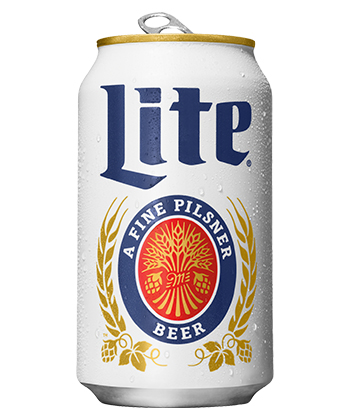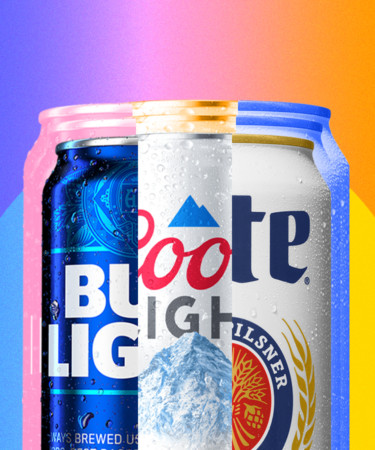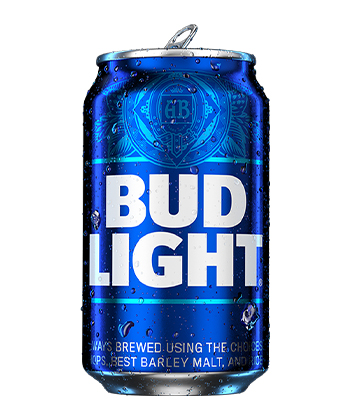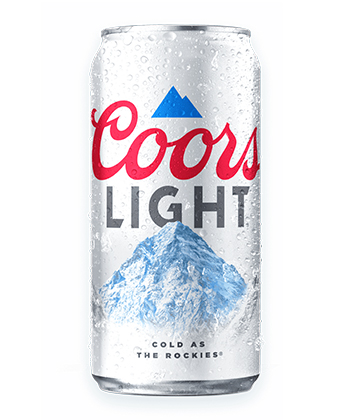Despite the impressive craft beer scene flourishing in the U.S., three brands, Bud Light, Coors Light, and Miller Lite, continue to dominate. As detailed by VinePair, in 2018, Bud Light was the top seller, with 29.4 million barrels of its lager shipped in the U.S.; Coors Light came in second place with 14.9 million barrels; and Miller Lite was third, with a still impressive 12.6 million barrels.
Whether it’s brilliant marketing or just America’s obsession with light beers, these mega brands collectively make up more than 25 percent of U.S. beer sales. Keep reading to learn more about the Big Three that have stolen America’s heart.
Origin
While Bud Light has been available since 1982, the brand was founded in the 1850s as a small St. Louis-based brewery and co-owned by the German immigrant Eberhard Anheuser. In 1860, Anheuser bought out the brewery’s investors, but it was his son-in-law, Adolphus Busch, who took the company national and renamed it Anheuser-Busch. In 2008, the Belgium-based company InBev acquired Anheuser-Busch, becoming known as Anheuser-Busch InBev (AB InBev).

Miller Lite originated from an unlikely source: biochemist and brewmaster Dr. Joseph Owades. While working for Rheingold Breweries in the 1960s, Owades developed a low-calorie beer called Gablinger’s Diet Beer. For a time, the beer was sold under the Meister Brau brand, but it was eventually purchased by the Miller Brewing Company in 1972, which altered the recipe and renamed it Miller Lite.
In 1873, the German-born Adolph Coors founded the Golden Brewery after immigrating to Colorado, which would later become known as the Coors Brewing Company. More than 100 years later, in 1978, the company launched Coors Light to keep up with the onslaught of low-calorie beers that began to flood the market. The ploy clearly worked and today, the “Silver Bullet” also enjoys bragging rights on a global scale.
Alcohol Content
When it comes to the brand that truly lives up to its name, all three clock in with the same alcohol content — 4.2 percent ABV — but where they differ is in total calories and carbs. Dr. Owades would be proud as Miller Lite is the winner, with only 96 calories in a 12-ounce can, whereas Bud Light contains 110, and Coors Light has 102.
Production
In 2019, Bud Light famously ran a Super Bowl ad that mocked its two biggest competitors for brewing their beer with corn syrup. According to The Beer Connoisseur: “AB InBev uses rice in their mash to make Bud Light. MillerCoors adds corn syrup directly into the boil for Miller Lite and Coors Light. Either way, the result is the same — yeast use the sugar supplied to them for their fermentation process.” The ad campaign sparked a lawsuit. While the initial judgment favored MillerCoors, in 2020, a federal judge overturned the ruling, stating, “Litigation should not be a substitute for competition in the market.”
Flavor
According to VinePair, Bud Light, Miller Lite, and Coors Light fall into the category known as “Lite American macro lagers.” The style tends to produce beers that are light in body and flavor, but crisp and clean, and meant to be enjoyed as cold as humanly possible. Simply put,“This is the stuff of summertime beer commercials.”
What the Pros Think
For many, nostalgia plays a role in brand loyalty. Mike, a Jersey City professional in the beer industry, admits that when it comes to choosing a macro beer, it’s really just “a force of habit.” Coors Light was what he drank in his younger years, so it’s the brand that comes to mind. In fact, after recently enjoying a Coors Light for the first time in years, he admits it was like a “breath of fresh air.”
Even craft brewers sometimes reach for Big Beer. As Shaun O’Sullivan, the co-founder of the 21st Amendment Brewery, told VinePair, a cold Coors Light is his guilty pleasure: “I generally have a few cans in my refrigerator for the rare moments when I don’t want a craft beer but I don’t want to drink soda or water … I like it because it’s a lot like water.”


